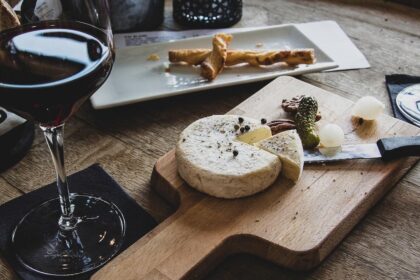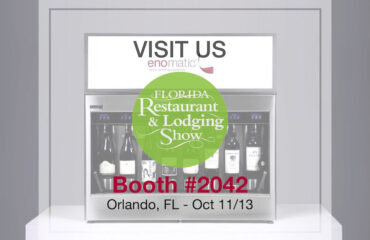
Wine pairing is the art of matching wine with food to enhance the flavors of both. It is a complex topic, but there are some basic principles that can help you get started. In this article, we will discuss the basics of wine pairing, as well as some more advanced tips and techniques.
The Basics of Wine Pairing
When pairing wine with food, there are a few key factors to consider:
- Weight: The weight of the wine should be in balance with the weight of the food. A heavier wine, such as a Cabernet Sauvignon, will overwhelm a lighter dish, such as a grilled fish. Conversely, a lighter wine, such as a Pinot Grigio, will be lost on a heavier dish, such as a steak.
- Acidity: The acidity of the wine should be able to cut through the richness of the food. Fatty foods, such as cream sauce or cheese, pair well with high-acid wines, such as Sauvignon Blanc or Riesling.
- Tannins: Tannins are compounds found in red wine that give it a dry, mouth-puckering sensation. Tannins can clash with certain foods, such as eggs or seafood. To avoid this, choose a red wine with lower tannins, such as a Pinot Noir or Beaujolais.
- Sweetness: The sweetness of the wine should complement the sweetness of the food. Sweet wines pair well with sweet desserts, while dry wines pair better with savory dishes.
Advanced Wine Pairing Tips
Once you have mastered the basics of wine pairing, you can start to experiment with more advanced techniques. Here are a few tips to help you get started:
- Match the sauce, not the meat: When pairing wine with a dish with a sauce, it is important to consider the flavor of the sauce, not just the type of meat. For example, a steak with a mushroom sauce would pair better with a red wine that has earthy flavors, such as a Pinot Noir or Sangiovese.
- Consider the cooking method: The cooking method of the food can also affect the flavors of the dish and how it pairs with wine. For example, grilled meats tend to have more intense flavors than braised meats. Grilled meats pair well with bold red wines, such as Cabernet Sauvignon or Syrah, while braised meats pair better with softer red wines, such as Merlot or Zinfandel.
- Don’t be afraid to experiment: There are no hard and fast rules when it comes to wine pairing. The best way to find pairings that you enjoy is to experiment and try new things.
Wine Pairing by Food Type
Here are some general guidelines for pairing wine with different food types:
- Fish: Fish is a delicate food that pairs best with white wines that have high acidity. Some good options include Sauvignon Blanc, Pinot Gris, and Riesling.
- Shellfish: Shellfish has a more robust flavor than fish and can be paired with both white and red wines. White wines such as Chardonnay and Albariño pair well with shellfish, as do light-bodied red wines such as Pinot Noir and Beaujolais.
- Chicken: Chicken is a versatile food that can be paired with a variety of wines. For roasted chicken, choose a white wine with medium acidity, such as Chardonnay or Viognier. For grilled chicken, choose a white wine with high acidity, such as Sauvignon Blanc or Riesling.
- Pork: Pork is a fatty meat that pairs well with high-acid wines. Some good options include Riesling, Sauvignon Blanc, and Pinot Gris.
- Beef: Beef is a bold-flavored meat that pairs best with red wines that have high tannins and acidity. Some good options include Cabernet Sauvignon, Syrah, and Zinfandel.
- Lamb: Lamb has a unique flavor that pairs well with red wines that have earthy flavors. Some good options include Pinot Noir, Sangiovese, and Grenache.
- Cheese: Cheese is a versatile food that can be paired with a variety of wines. For soft cheeses, such as Brie and Camembert, choose a white wine with medium acidity, such as Chardonnay or Viognier. For hard cheeses, such as Parmesan and cheddar, choose a red wine with medium tannins, such as Merlot or Cabernet Sauvignon.
- Dessert: Dessert is a sweet food that pairs best with sweet wines. Some good options include Sauternes, Moscato d’Asti, and Port.
Tips for Serving Wine
- Serve wine at the correct temperature: White wine should be served chilled, while red wine should be served at room temperature. However, room temperature is often too warm for red wine, so it is best to serve it slightly below room temperature. Sparkling wine should be served very chilled.
- Use the right glassware: Different types of wine glasses are designed to enhance the flavors of different types of wine. For example, white wine glasses are typically taller and narrower than red wine glasses. This is because white wine is meant to be enjoyed cold, and the taller and narrower glass helps to keep the wine cold. Red wine glasses are typically shorter and wider than white wine glasses. This is because red wine is meant to be enjoyed at room temperature, and the shorter and wider glass helps to aerate the wine, which releases its aromas and flavors.
- Pour the correct amount of wine: When pouring wine, be sure to leave some space at the top of the glass. This is because the wine will expand as it warms up.
- Offer your guests a taste: Before pouring your guests a full glass of wine, offer them a taste so that they can make sure they like it.
Conclusion
Wine pairing is a complex and nuanced topic, but there are some basic principles that can help you get started. By following the tips above, you will be well on your way to pairing wine with food like a pro.
Here are some additional tips for wine pairing:
- Consider the occasion: When pairing wine with food, it is important to consider the occasion. For a formal occasion, you may want to choose a more expensive wine. For a casual occasion, you may want to choose a more affordable wine.
- Consider your guests’ preferences: If you are serving wine to a group of people, it is important to consider their preferences. Some people may prefer white wine, while others may prefer red wine. You may also want to consider any dietary restrictions, such as allergies or intolerances.
- Don’t be afraid to ask for help: If you are unsure about what wine to pair with a particular dish, ask your local wine shop for help. They will be able to recommend wines that will complement the flavors of the food.
- Consider a wine dispenser: if you are serving a large variety of dishes, you might want to have several different bottles of wine for all of them. An easy way to preserve them once opened and to avoid waste while making it easier to serve, is to add an Enomatic wine dispenser to your home or business. A wine dispenser such as Enomatic Unica or Eno ONE will help you preserve your opened bottles in optimal conditions.
With a little practice, you will be able to pair wine with food like a pro!



